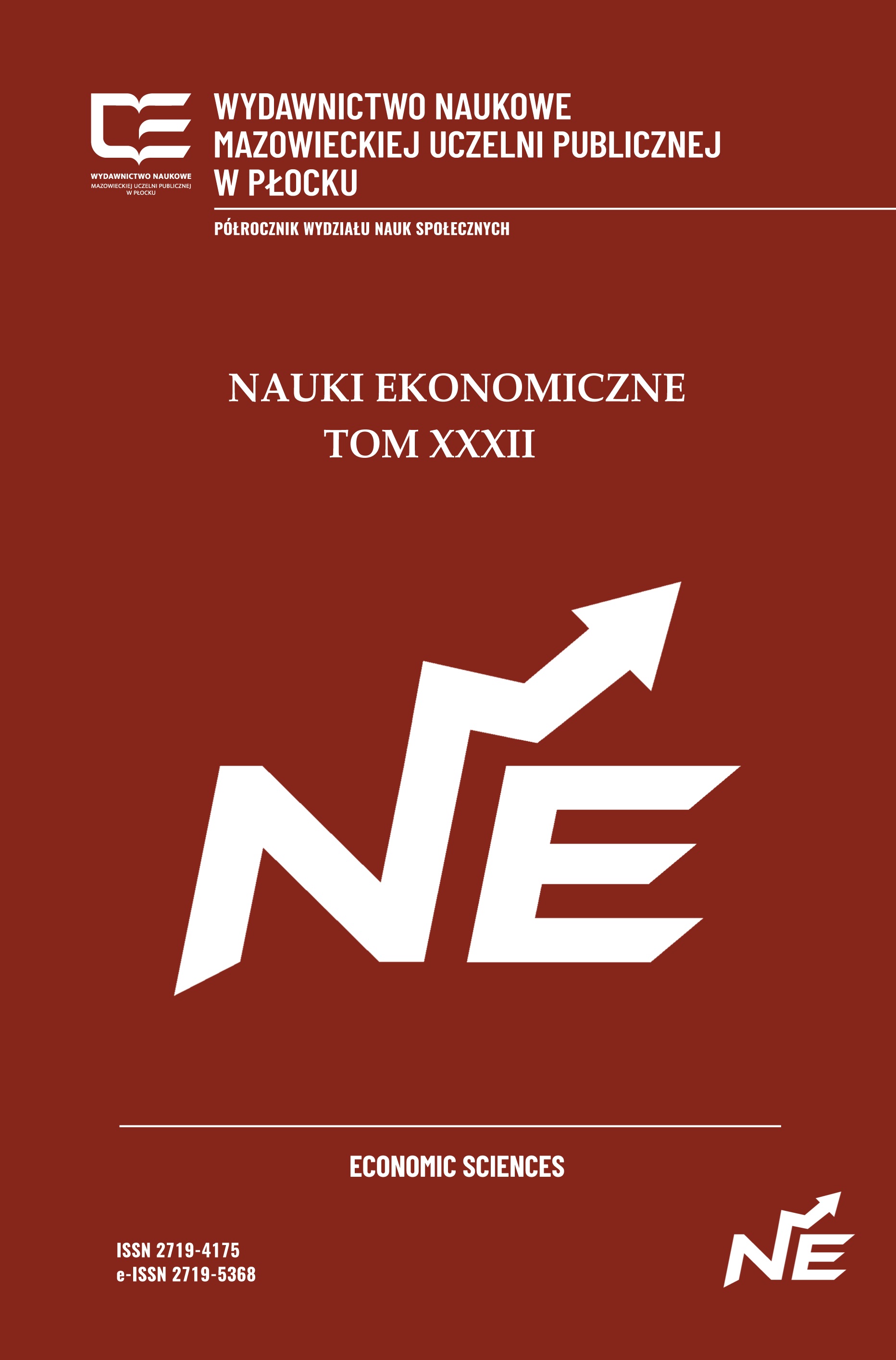KONDRATIEV’S CYCLES AFTER WORLD WAR II. CRISES OF THE 21ST CENTURY
Keywords:
long wave, business cycle, deformation cycleAbstract
DOI: 10.19251/ne/2020.32(6)
In times of economic recession, answers are sought for questions about the coming crisis – its magnitude and potential effects. Business cycle theories explain the mechanisms that lead to crises. One of the main business cycles is the long Kondratiev cycle, which can explain the reasons for the recession from the beginning of the 21st century. The conclusions drawn from observations of short and medium business cycles after World War II, suggest that long Kondratiev cycles have also been deformed. In this article, the long cycles of Kondratiev after World War II are analyzed. The purpose of the work was to check if deformations also occurred in the Kondratiev cycles. The article also attempts to explain the stagnation of the economy at the beginning of the 21st century in the context of long cycles. The 2008 crisis turned out to be a breakthrough year for the Kondratiev cycle. In addition, the result of the work is the finding of cycle deformations regarding duration, phase amplitude or range.
References
Adams Carl, Mouatt Simon. 2010. „The Information Revolution, Information Systems and the 6th Kondratieff Cycle”. Conference Paper: MCIS 2010: 3. http://aisel.aisnet.org/mcis2010/3 (dostęp 14.03.2020)
Brodziński Piotr. 2009. „Kryzys lat 70 – jego przyczyny i skutki”. https://historia.org.pl/2009/04/14/kryzys-lat-70-tych-jego-przyczyny-i-skutki/ (dostęp 15.03.2020)
Coccia Mario. 2010. „The asymmetric path of economics long waves”. Technological Forecasting&
Social Change tom 77:730-738. DOI:10.1016/j.techfore.2010.02.003
Galegatti Marco. 2017. „“Structural” cycles in world economic growth: long waves dating chronology”.
Conference Paper: 66th Annual Meeting of the French Economic Association
Grinin Leonid, Grinin Anton. 2016. „The sixth Kondratieff wave and the cybernetic revolution.”[w:] Globalistics and globalization studies: Global Transformations and Global Future ,
Volgograd: Uchitel Publishing House: 337–355
Hacaga Maciej. 2015. „Baterie wojny. Albo o trzeciej wojnie światowej”. https://wszystkoconajwazniejsze.pl/maciej-hacaga-baterie-wojny/ (dostęp 15.03.2020)
Jorda Oscar, Schularick Moritz, Taylor Alan M.. 2016. „Macrofinancial history and the new business cycle facts”. National Bureau of Economic Research tom 22743, DOI: 10.3386 / w22743
Korotayev Andrey, Tsirel Sergey. 2010. „A spectral analysis of world GDP dynamics: Kondratieff Waves, Kuznets Swings, Juglar and Kitchin Cycles in global economic development and the 2008–2009 economic crisis”. Structure and Dynamics tom 4(1) https://escholarship.org/uc/item/9jv108xp (dostęp 14.03.2020)
Kuźbiel Daniel. 2018. „Analiza krytyczna wybranych teorii cyklu koniunkturalnego” [w:] Współczesne problemy ekonomiczne w badaniach młodych naukowców. T. 1, Wzrost, rozwój i polityka gospodarcza, red. Ewa Gruszewska, Kinga Karpińska, Anna Protasiewicz 10-23 Białystok: Polskie Towarzystwo Ekonomiczne
Łukasiewicz Juliusz. 1967. Krach na giełdzie. Zarys historii kryzysów ekonomicznych. Warszawa: Wiedza Powszechna
Matkowski Zbigniew.1997. „Problem identyfikacji cykli koniunkturalnych”. Prace i Materiały Instytutu Rozwoju Gospodarczego SGH, tom 51:13-39
Mizen Paul. 2008. „The Credit Crunch of 2007-2008: A Discussion of the Background, Market Reactions and Policy Responses”. Federal Reserve Bank of St. Louis Review 90(5):531-67
Morawski Wojciech. 2003. Kronika kryzysów gospodarczych. Warszawa : Trio
Neofidow Leo, Neofidow Simone. 2014. „The sixth Kondratieff. The new long wave in global economy”. Sankt Augustin: CreateSpace Independent Publishing Platform
Pancer-Cybulska Ewa.2018. „Działania UE wobec krajów dotkniętych kryzysem fiskalnym”.
Studia Ekonomiczne. Zeszyty Naukowe Uniwersytetu Ekonomicznego w Katowicach nr 347: 9-21
Pielach Michał. 2015. „Idzie kolejna zima gospodarcza”, Obserwator finansowy 4 https://www.obserwatorfinansowy.pl/tematyka/makroekonomia/trendygospodarcze/idzie-kolejna-gospodarcza-
zima/ (dostęp 12.03.2020)
Rothbard Murray. 1984. „The Kondratieff Cycle: Real or Fabricated?”. Investment Insights: 7-8
Salameh Mamdouh. 2001. „The third oil crisis?”. Survival, 43/3: 129-144. DOI: 10.1080/00396330412331344158
Stopka Michał. 2016. „Cykl Kondratiewa a granice kreowania długów”/www.michalstopka.pl/krach-i-wojna-piecdziesiecioletni-cykl-kondratiewa-a-granice-kreowania-dlugow (dostęp 25.01.2020)
Szymanik Ewa, Zyguła Andrzej. 2009. Cykliczne wahania aktywności gospodarczej. s 9-25, Kraków: Oficyna Wydawnicza AFM
Zelek Aneta. 2018. „Kryzysy były, są i będą! – o przesłankach kolejnego kryzysu gospodarczego”. Firma i Rynek tom 54: 5-19
